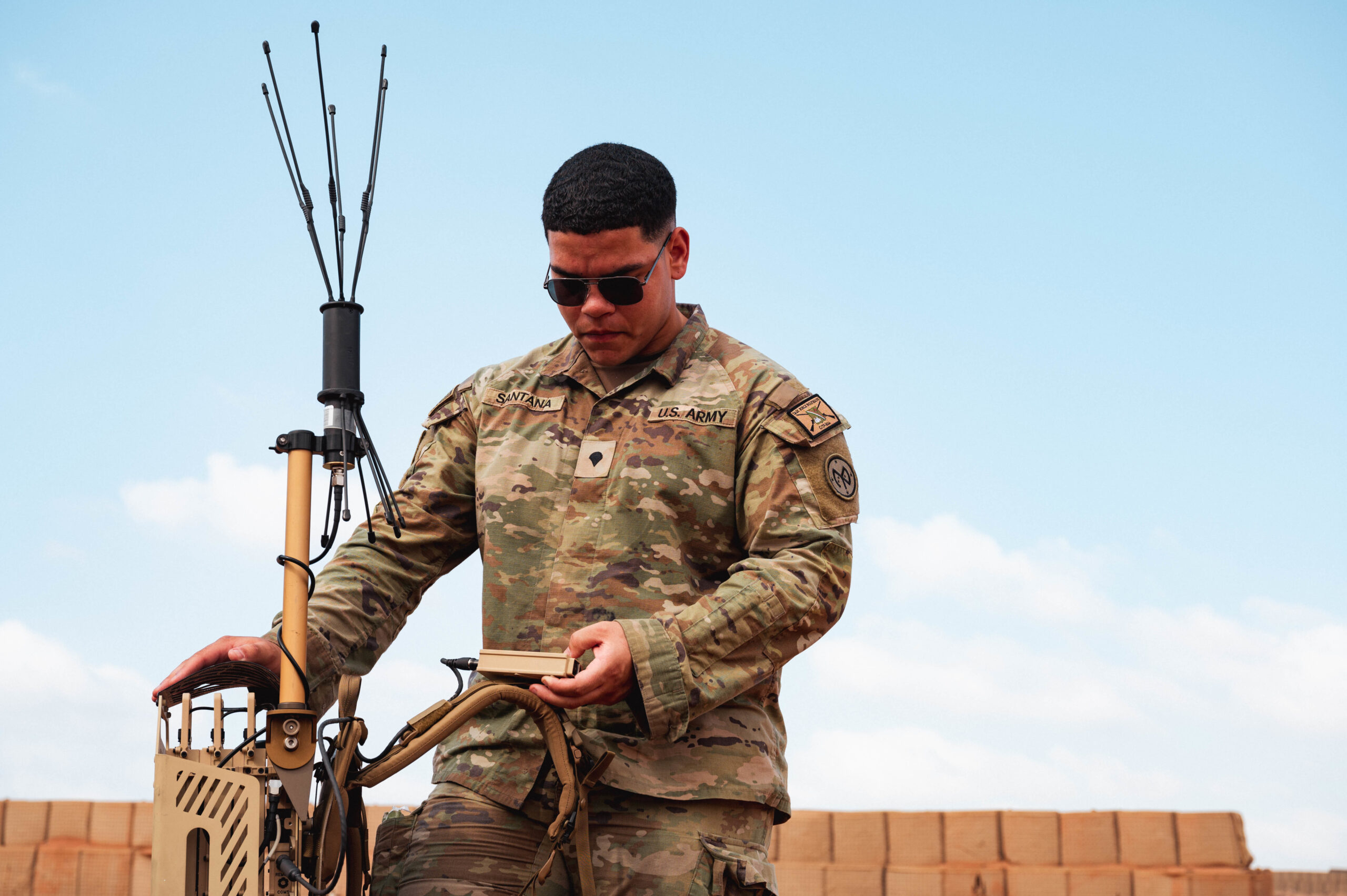

Three basic battlefield skills all soldiers learn early in their training is to “shoot, move and communicate.” But in the modern battlefield, firing a weapon or using a radio is almost certain to light up a sensor, reveal a soldier’s location and perhaps lead to fatal consequences for units, said Maj. James Armstrong, an instructor at the U.S. Army Cyber School.
“Just like your artillery has a very big audible visual signature when it lights up, so does your radio,“ said Armstrong. “It doesn’t mean that you just turn everything off and don’t talk. It means you’ve got to be smart about how you use it.”
According to Armstrong, combat in Ukraine is proof that all soldiers need to learn the basics of electromagnetic warfare — or EW — to not be spotted, tracked and attacked, either directly or electronically. To meet that need, the cyber school is working to bring a curriculum on electronic warfare training soldiers to every soldier that needs it, from infantry to armor to supply troops in the rear, beginning as early as boot camp.
The first step is a pilot program by the Cyber School in collaboration with Infantry, Armor, and Ranger Schools at Fort Moore. The program will look at adding EW training to basic training, Primary Military Education when soldiers learn their jobs and in combat maneuver exercises throughout their careers.
The first students in the new program will be junior officers in a Captain’s Career Course at Fort Moore that began this month. Cyber officials said elements of the EW training may eventually make their way into the Army’s Ranger, infantry and armor schools.
Subscribe to Task & Purpose Today. Get the latest military news and culture in your inbox daily.
Along with obvious examples like battlefield radios that emit signatures on the electromagnetic spectrum, cyber-focused troops are focusing on weaknesses up and down the supply chain: supply soldiers with communications equipment that order and track supplies; Logistics troops using devices that are put onto Conex shipping containers for tracking; and medical units utilizing telemedicine communications for patients.
“The ubiquitous nature of communications, the dependencies of the electromagnetic spectrum means that we and our adversaries are at risk,” said Todd Boudreau, Deputy Commandant of the U.S. Army Cyber School. The electromagnetic spectrum includes any device that connects wirelessly like technology that uses Bluetooth, Wi-Fi, cellular or radar.
CW5 Travis Ysen, Cyber Regimental Chief Warrant Officer said the Army’s survivability comes down to risk management. “There’s no hiding, so we got to protect ourselves through electromagnetic protection. We’ve got to manage our risk signature, Ysen said.
The plan is not to make regular soldiers into EW experts but instead help all current soldiers understand how EW threats affect their missions, Boudreau said.
The Army stood up its first electromagnetic warfare MOS in 2010, and standardized the positions in 2017 into cyber and EW-specific MOSs. Current EW soldiers are trained as 17E Electromagnetic Warfare Specialist for enlisted soldiers, 170B Electromagnetic Warfare Technician for warrant officers and 17B Cyber Electromagnetic Warfare Officer for military officers.
The Cyber School at Fort Eisenhower, Georgia is developing The Total Army Electromagnetic Warfare and Counter-EW Training and Education Strategy for teaching and training soldiers across all levels of the Army. The plan is to publish the framework in 2024.
The education push comes after the Army’s EW training waned from the lack of use in Afghanistan and Iraq. As priorities shifted, so did funding for this type of instruction, Boudreau said. Now the Army is trying to build its EW arsenal back up to compete with more technology-savvy adversaries like Russia which has demonstrated its capabilities in Ukraine with detection and targeting of Ukrainian military assets.
One of the takeaways from the war in Ukraine is the need for soldiers’ professional education to include the risks and vulnerabilities of the equipment they use, Armstrong said.
The training will also be essential for the Defense Department’s latest push to incorporate commercial off-the-shelf technology with the Replicator initiative, which aims to field thousands of cheap, reusable autonomous systems in the next two years. The Army is working with Congress on funding, systems and programs towards the new strategy, but Boudreau did not offer specific details.
EW use cases for the replicator initiative may include using commercial drones and commercial frequencies to “blend in” on the electromagnetic spectrum, he said.
“How do we hide in the noise that’s already there? Then similarly how do we disintegrate and dislocate and dissemble ourselves and capabilities across a wider physical space to make it harder, to see, to make it harder to identify,” Boudreau said.
The latest on Task & Purpose
- A guide to every beret worn by American service members
- Army general says moldy barracks are a ‘discipline problem’
- Best of the bad: What was the best C-ration during the Vietnam War?
- How rank and rate works in the Navy
- $1.3 billion in Army spare parts found in ‘critical’ shape, IG reports